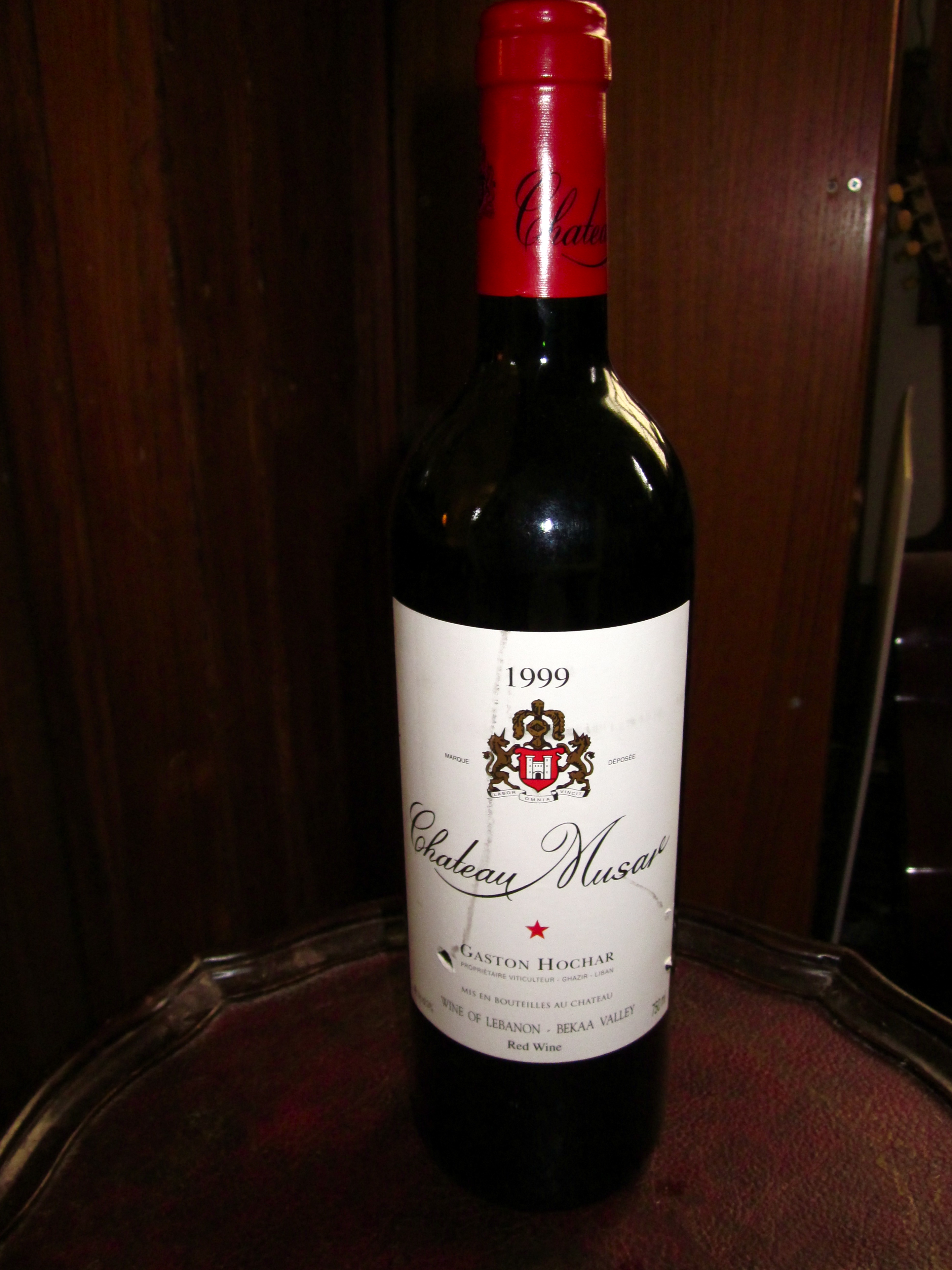Chateau Musar on:
[Wikipedia]
[Google]
[Amazon]
Chateau Musar is the name of a Lebanese winery in Ghazir, Lebanon, north of the capital Beirut. Musar grapes grow in the 
Chateau Musar official site
{{DEFAULTSORT:Chateau Musar Wineries of Lebanon 1930 establishments in Lebanon Food and drink companies established in 1930 Lebanese brands
Beqaa Valley
The Beqaa Valley ( ar, links=no, وادي البقاع, ', Lebanese ), also transliterated as Bekaa, Biqâ, and Becaa and known in classical antiquity as Coele-Syria, is a fertile valley in eastern Lebanon. It is Lebanon's most important ...
, a fertile sunny valley at an elevation of , situated east of Beirut.

History
The winery was established by Gaston Hochar in 1930 after returning from Bordeaux. Gaston Hochar was succeeded by his sons, Ronald and Serge Hochar, with the latter managing the estate from 1959 until his death while swimming in Mexico in 2014, and Ronald Hochar assuming marketing and finance department responsibilities from 1962. Serge Hochar's sons have succeeded him at the winery. Gaston Hochar is now in charge of the day-to-day running of the winery, and Marc Hochar is in charge of the winery's commercial aspects. In the 1930s and 1940s when Lebanon was under French control, the winery was an important customer for local French Army troops stationed in Lebanon. A French officer named Ronald Barton(whom Gaston named his second son after), and was stationed in Lebanon, was highly influential to the early development of Chateau Musar's wines, as Barton was affiliated with the Bordeaux wineries Château Langoa-Barton and Château Léoville Barton. In 1959, Serge Hochar becomes Chateau Musar winemaker, while completing his winemaking studies at the University of Oenology in Bordeaux, under the tutorage of Jean Riberau and Emile Peynaud. Before the Lebanese Civil war (1975-1990), the Chateau Musar wines were mostly sold to domestic markets, however the war changed that. Gaston Hochar's son Ronald Hochar helped market the wine abroad and from the late 1970s and early 1980s the wine became more popular abroad. The international discovery of Musar took place at the Bristol Wine Fair of 1979 when auctioneer and taster Michael Broadbent and journalist Roger Voss selected Musar 1967 as the "discovery of the Fair". Despite war in Lebanon and frequent tension, with the exception of the 1976 vintage, wine has been produced at the Château every year, with employees sometimes working under high-risk conditions. (1984 was made, despite difficulties in transporting the grapes to the winery. It has not yet been released commercially.) The 1992 red Chateau Musar production was declassified due to a weak vintage. Though comparisons are sometimes made with Bordeaux wine, Burgundy wine or Rhône wine, it is most frequently maintained that the wine of Musar is unique. Due to the winemaking philosophy of Serge Hochar, its vintages are notoriously inconsistent.Production
The red wine, which is the best known is made fromCabernet Sauvignon
Cabernet Sauvignon () is one of the world's most widely recognized red wine grape varieties. It is grown in nearly every major wine producing country among a diverse spectrum of climates from Australia and British Columbia, Canada to Lebanon' ...
, Cinsault, Carignan, Grenache
Grenache () or Garnacha () is one of the most widely planted red wine grape varieties in the world. Niels Lillelund: ''Rhône-Vinene'' p. 25, JP Bøger – JP/Politikens Forlagshus A/S, 2004. . It ripens late, so it needs hot, dry conditi ...
, and Mourvèdre grapes in varying amounts each year. The whites are made from Obaideh (related to Chardonnay
Chardonnay (, , ) is a green-skinned grape variety used in the production of white wine. The variety originated in the Burgundy wine region of eastern French wine, France, but is now grown wherever wine is produced, from English wine, Englan ...
) and Merwah (related to Sémillon). Both wines contain classic Bordeaux grapes, however they are very different, as they are made in a natural wine style with significant bottle variation
Bottle variation is the degree to which different bottles, nominally of the same product, can have different taste, smell, etc.
There are many possible causes of bottle variation:
* variation in the contents prior to packaging
* variation in the p ...
. The wines generally improve with age, both the red and whites.
They also produce a single vineyard wine, Hochar, which is similar to the red Musar but is oak aged for only 9 months, and can be drunk younger, as well as the Cuvée Musar range, both produced as a red, white and a rosé
A rosé () is a type of wine that incorporates some of the color from the grape skins, but not enough to qualify it as a red wine. It may be the oldest known type of wine, as it is the most straightforward to make with the skin contact method. ...
. Hochar Père et Fils is released earlier and can be used as an indication of what the Chateau Musar wine will be like. It is usually around half the price of the regular Chateau Musar. They have also begun production of a restaurant range, Musar Mosaic, and a wine from their younger grapes, Musar Jeune.
References
External links
Chateau Musar official site
{{DEFAULTSORT:Chateau Musar Wineries of Lebanon 1930 establishments in Lebanon Food and drink companies established in 1930 Lebanese brands